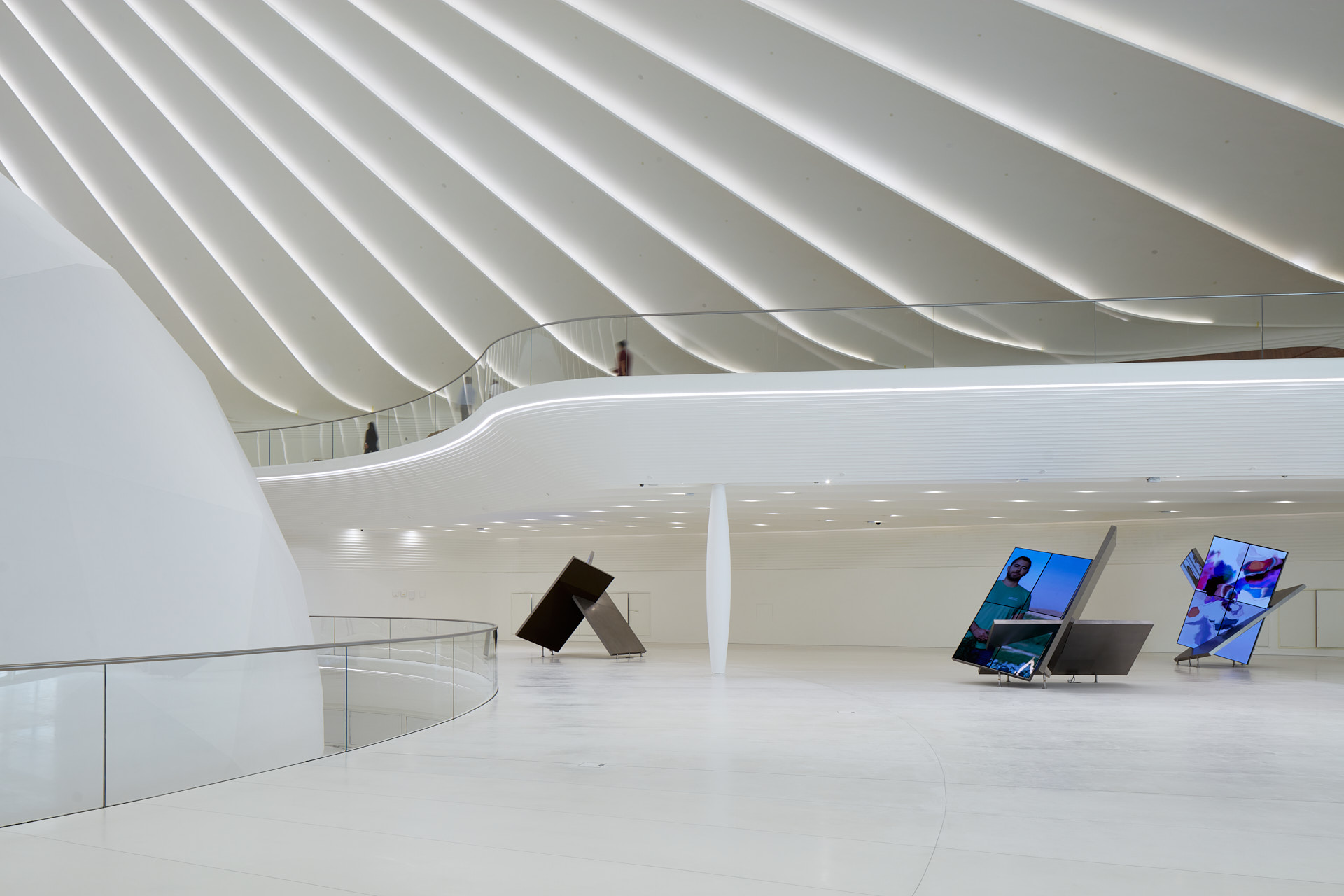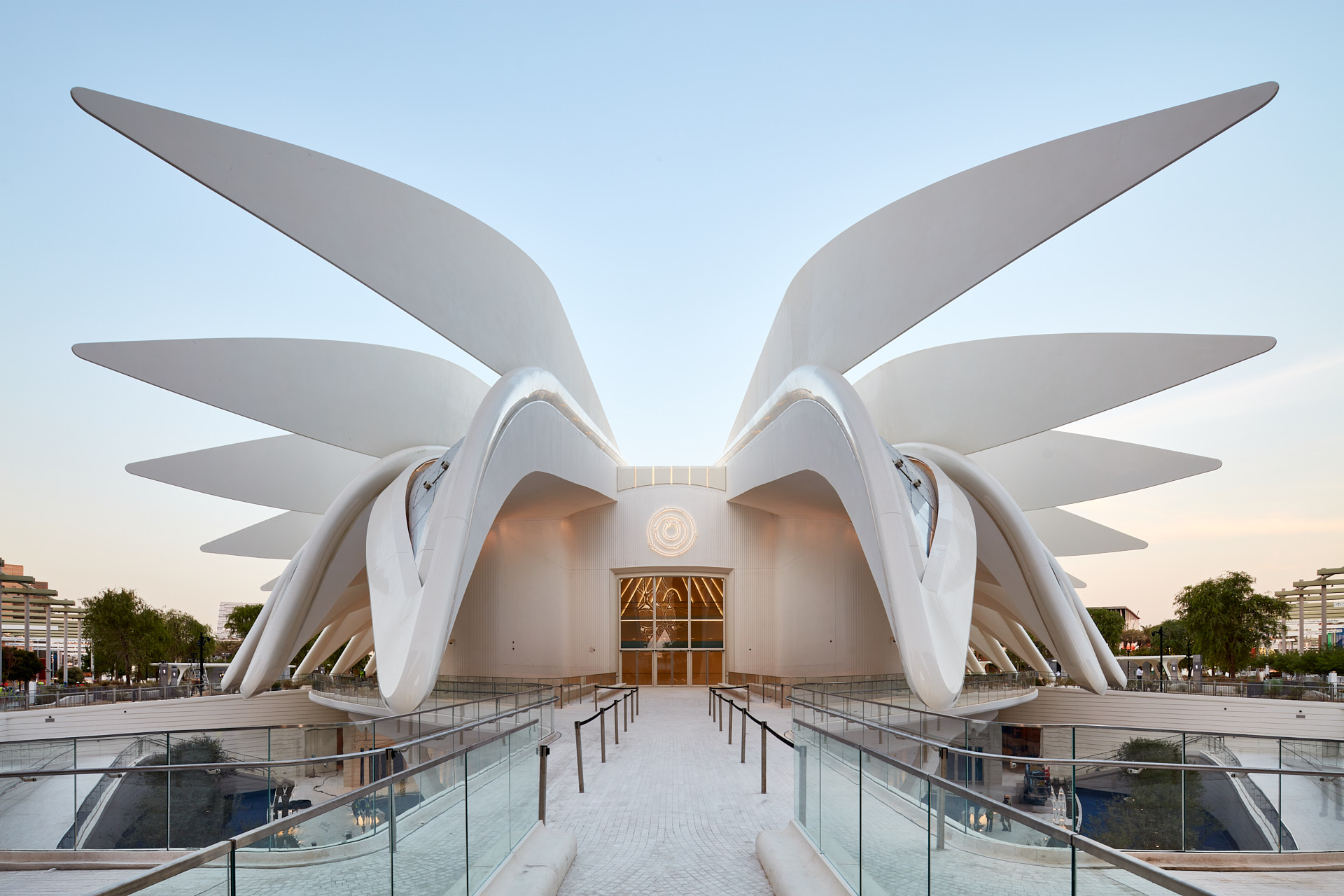The UAE Pavilion
The UAE Pavilion, designed by Santiago Calatrava, highlights the UAE’s history and aspirations through its mesmerizing architecture. It is located in the center of the World Expo 2020 exhibition site in Dubai. By an impression from the majestic falcon, the country’s national bird, the building spreads 28 moveable wings in a symphony to represent the UAE’s strength and legacy. The whole pavilion is surrounded by culturally significant trees and provides a calm and tranquil environment for visitors.
Learn parametric design and computational tools from the pioneers of the industry at the PAACADEMY:
After a seven-month design competition, this design concept was selected among several proposals of top global architecture firms. The submitted ideas were judged based upon how well they could enhance the central theme of Expo 2020, “Connecting Minds, Creating the Future.”
This building plays a critical role in energy conservation by absorbing solar energy and harvesting it to power the primary power grid. The process is completed by 28 moveable wings on the oculus skylight which expands to display a grid of photovoltaic panels. The wings can be opened in three minutes to cover a range of 110 to 125 degrees. They also can be folded to protect the solar panels against rain and sandstorms.
The building is not only energy efficient. Additionally, it benefits from local materials and improves indoor air quality. Therefore, It became the LEED Platinum-certified pavilion by incorporating various sustainable design aspects and qualities that comply with Dubai Green Building Regulations and Specifications.
The 15,000-square-meter UAE pavilion builds up immersive experiences for visitors by its meticulously controlled lines and spaces, plant-covered arcades, cantilevered wings, and integrated cinematic features. It encompasses two main galleries and exhibition spaces, and a sphere-like void in the pavilion’s core. This space holds an auditorium with an elevating platform. During the audio-visual experience, the platform supports the interior seating and transfers the audience from one floor to another.




































Leave a comment